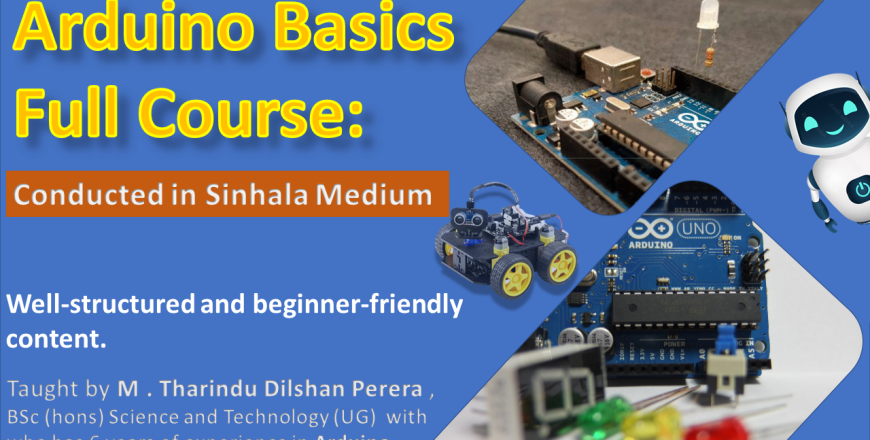Arduino for beginners

- Description
- Reviews
Introduction to Arduino – Course Description
This beginner-friendly course introduces learners to the exciting world of Arduino, an open-source electronics platform used for building interactive hardware projects. Through hands-on learning, students will explore how hardware and software work together, gaining the skills to design and program simple electronic systems.
The course begins with the basics of Arduino boards, components, and the Arduino IDE (Integrated Development Environment). Students will learn fundamental programming concepts such as variables, loops, and conditional statements while writing code to control sensors, LEDs, motors, and other hardware modules. Practical exercises and guided projects will help participants build real-world applications, such as automated lights, temperature monitoring systems, and simple robotics.
By the end of this course, students will have a strong foundation in electronics and embedded programming, empowering them to create their own interactive projects and laying the groundwork for further exploration in robotics, IoT (Internet of Things), and advanced embedded systems.
Course Title: Introduction to Arduino
Level: Beginner
Duration: 10–15 hours (self-paced)
Format: Video lessons + Hands-on projects
Requirements: No prior coding or electronics knowledge required
What You’ll Learn:
-
Basics of Arduino boards and components
-
Using the Arduino IDE to write and upload code
-
Controlling LEDs, sensors, and motors
-
Building simple interactive projects
Course Requirements
-
A computer (Windows, macOS, or Linux) with internet access
-
An Arduino board (e.g., Arduino Uno) and USB cable
-
Basic electronic components (LEDs, resistors, jumper wires, breadboard, sensors – usually available in a starter kit)
-
No prior programming or electronics experience needed—this course starts from scratch
Intended Audience
-
Beginners curious about electronics and coding
-
Students and hobbyists who want to start building DIY projects
-
Makers interested in robotics, IoT, or automation
-
Educators looking for simple tools to teach programming and electronics
-
Anyone with a creative idea they’d like to bring to life using Arduino
